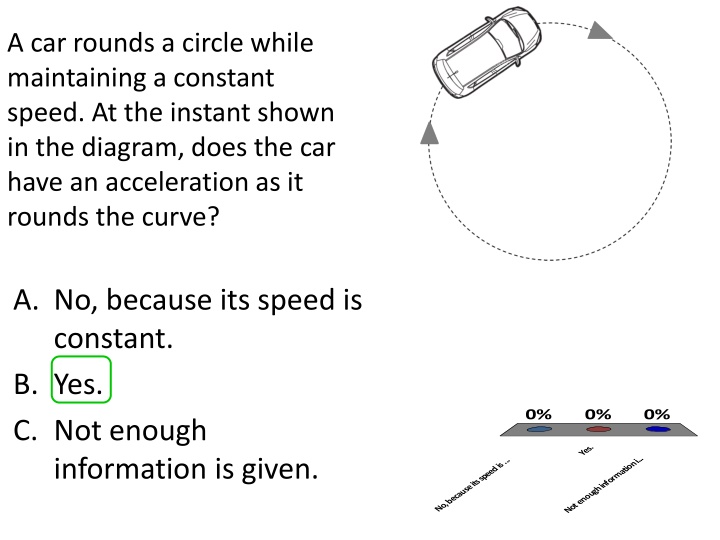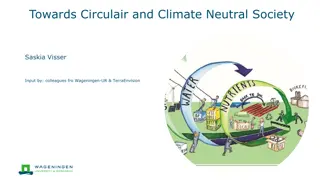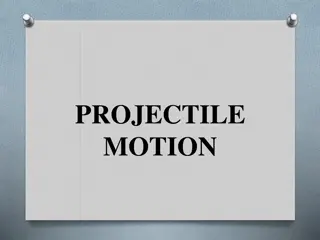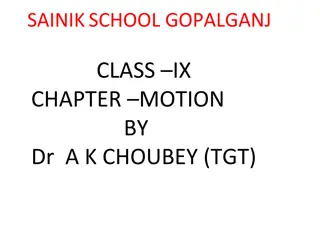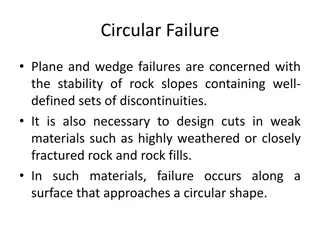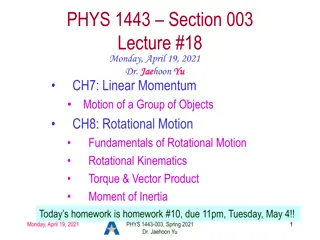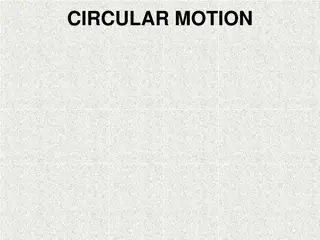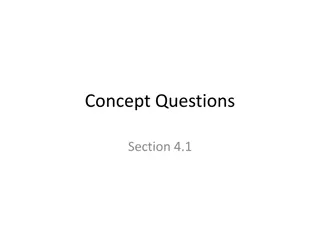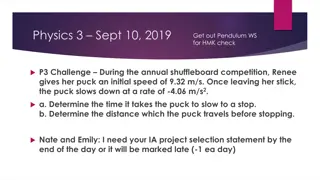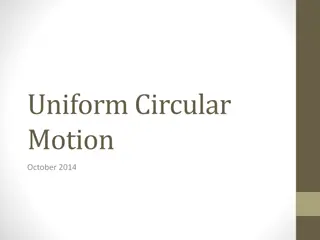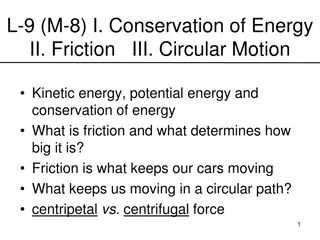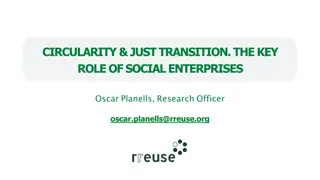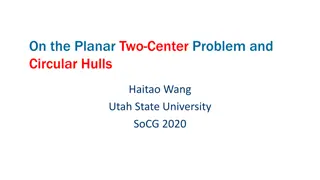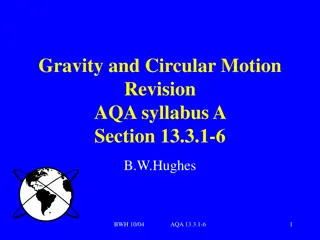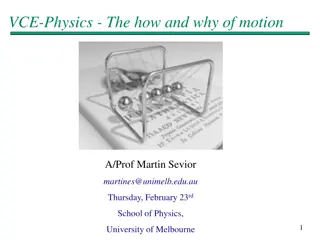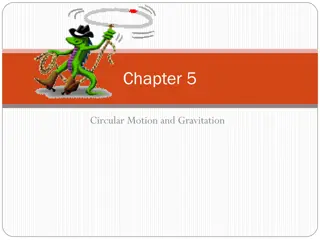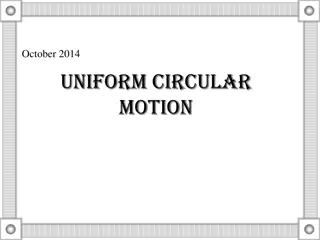Circular Motion in Physics
Concepts of acceleration, net force, and equilibrium in circular motion scenarios through engaging physics questions and diagrams. Discover how tangential speed and acceleration relate in circular trajectories. Work on problems involving constant speed and radius, determining forces acting on objects in motion.
Download Presentation

Please find below an Image/Link to download the presentation.
The content on the website is provided AS IS for your information and personal use only. It may not be sold, licensed, or shared on other websites without obtaining consent from the author.If you encounter any issues during the download, it is possible that the publisher has removed the file from their server.
You are allowed to download the files provided on this website for personal or commercial use, subject to the condition that they are used lawfully. All files are the property of their respective owners.
The content on the website is provided AS IS for your information and personal use only. It may not be sold, licensed, or shared on other websites without obtaining consent from the author.
E N D
Presentation Transcript
A car rounds a circle while maintaining a constant speed. At the instant shown in the diagram, does the car have an acceleration as it rounds the curve? A. No, because its speed is constant. B. Yes. C. Not enough information is given. 0% 0% 0% Yes. Not enough information i... No, because its speed is ...
A car rounds a circle while maintaining a constant speed. Which arrow represents the direction of the net force on the car as it rounds the curve at the instant shown above? 1. 2. 3. 4. 5. 6. 7. 8. 9. 0% 0% 0% 0% 0% 0% 0% 0% 0%
Bob the block is placed next to the cylindrical glass wall of an amusement park ride. The cylinder then spins up to a constant angular velocity, and spinning Bob remains stuck to the wall even when the floor drops away. The free- body diagram of all forces acting on Bob looks like: A. B. C. D. E. None of the above 0% 0% 0% 0% 0% None of the above
In a physics lab, you place a block on the top of a low-friction ramp. The block slides down the ramp, around a circular part at the bottom, up a ramp on the other side, and then shoots off the end. At what point (if any) is the net force on the block zero? A. B. C. D. E. None of the above 0% 0% 0% 0% 0% None of the above
A. Which of the diagrams shows possible directions of tangential velocity (v) and acceleration (a) vectors for an object moving at a constant speed in a circular trajectory? B. C. D. 0% 0% 0% 0%
An object of mass 10 kg is moving at a constant speed in a circle of radius 12 m. The period of revolution (the time it takes to complete one revolution) is 45 s. Find the tangential speed of the object (in m/s). Rank Responses 1 2 3 4 5 6 0% 0% 0% 0% 0% 0% 1 2 3 4 5 6
An object of mass 10 kg is moving at a constant speed in a circle of radius 12 m. The period of revolution is 45 s. Find the acceleration of the object (in m/s2). Rank Responses 1 2 3 4 5 6 0% 0% 0% 0% 0% 0% 1 2 3 4 5 6
An object of mass 10 kg is moving at a constant speed in a circle of radius 12 m. The period of revolution is 45 s. Find the net force acting on the object. Rank Responses 1 2 3 4 5 6 0% 0% 0% 0% 0% 0% 1 2 3 4 5 6
